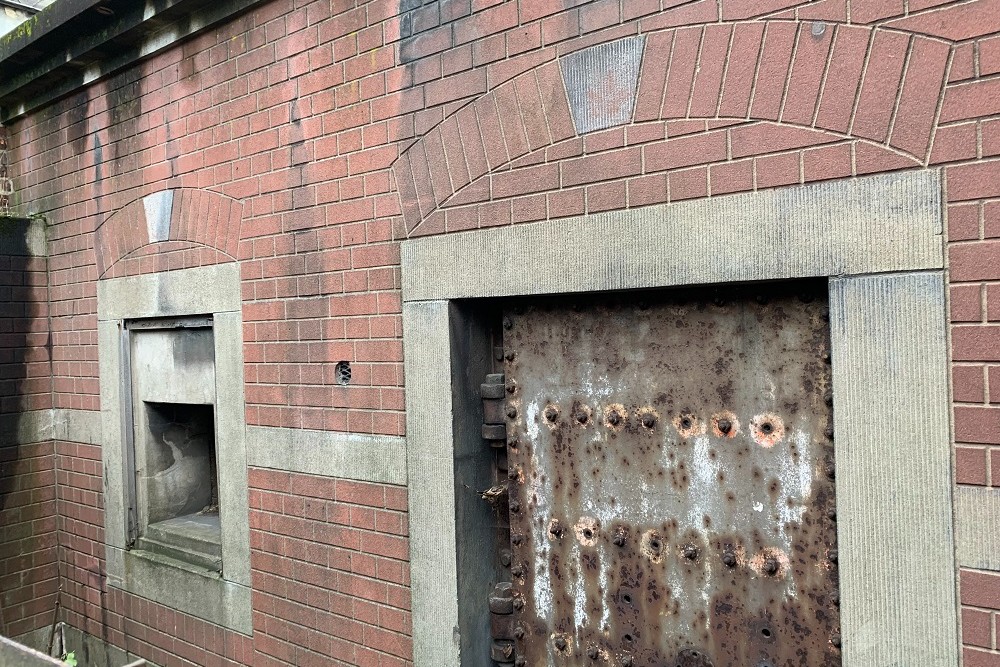Bunker CTF 4 Chênée
This is bunker CTF 4.
The bunker is part of the defense for the city of Liège, la Posistion Fortifiée de Liège, PFL.
CTF stands for 'Centraux téléphoniques' which can be translated as a bunker for telephone exchange. The bunker was not intended as a bunker in de line of defense or shelter. Within the PFL area there were 34 CTF-bunkers. They provided communication between the forts, bunkers.and secret underground telephonebooths T. and C5.
typical for this kind of bunkers is that they do not have gunopenings. On first sight one might think dat the opening next to the door was for a cannon or machinegun. But this is an escape hatch. The bunker is not accessible and still has it's original steel door.
The bunker is camouflaged in the typical redbrick patern so it would fit in with the houses in the area. The patern was carved in the cement. Also remarkable are the round arches with (phoney) key stone ont the window and door. And the cornice on top of the bunker. All to make the enemy believe this was a house instead of a bunker.
Telephone lines were burried as deep as 2 meters in between bunkers and the forts. Outside the forts the lines were burried even as deep as 6 meters. Out of precaution for the expected shelling of the forts with heavy artillary. At this depht the lines would be less vurnerable for the shells.
The walls and ceiling of the bunkers from the PFL were standard 1.30 m. thick and of reinforced concrete. They had to be able to withstand shells of 150 mm. To illustrate, the caliber of shells a Königstiger could fire was caliber 88 mm. Thus, only heavier caliber field guns could penetrate the concrete and potentially destroy the bunker.
The bunkers were built in the 1930s.
After the war, when the bunkers lost their strategic value for the Belgian army, the plots of land on which they stood were sold. All the metal of the hatches and doors was sold as scrap metal. Hence the that most bunkers are now on private plots.
Do you have more information about this location? Inform us!
Source
- Text: Ed Lewandowski
- Photos: Ed Lewandowski
- La Position Fortifiée de Liège, Coenen & Vernier
Nearby
Museum
Point of interest
- M41 Walker Bulldog Tank - Embourg (Chaudfontaine)
- Bunker MeMo 1 and 1 bis - Ile Monsin, Liège
- Memorial TROUSSON Felix - Chaudfontaine
Monument
- War Memorial Chenée - Chenée (Liège)
- Memorials Municipality Angleur - Angleur (Liège)
- War Memorial Bois-de-Breux - Bois-de-Breux (Luik)
Cemetery
- Belgian War Graves Grivegnée - Grivegnée (Luik)
- Belgian War Graves Grivegnée - Grivegnée (Luik)
- Belgian Graves Veterans Grivegnée Bois-de-Breux Churchyard - Grivegnée (Liège)
Remembrance Stone
- Stumbling Stone Rue Grétry 229 - Liège
- Stumbling Stones Rue des Champs 24 - Liège
- Stumbling Stones Rue Edouard Remouchamps 27a - Liège







